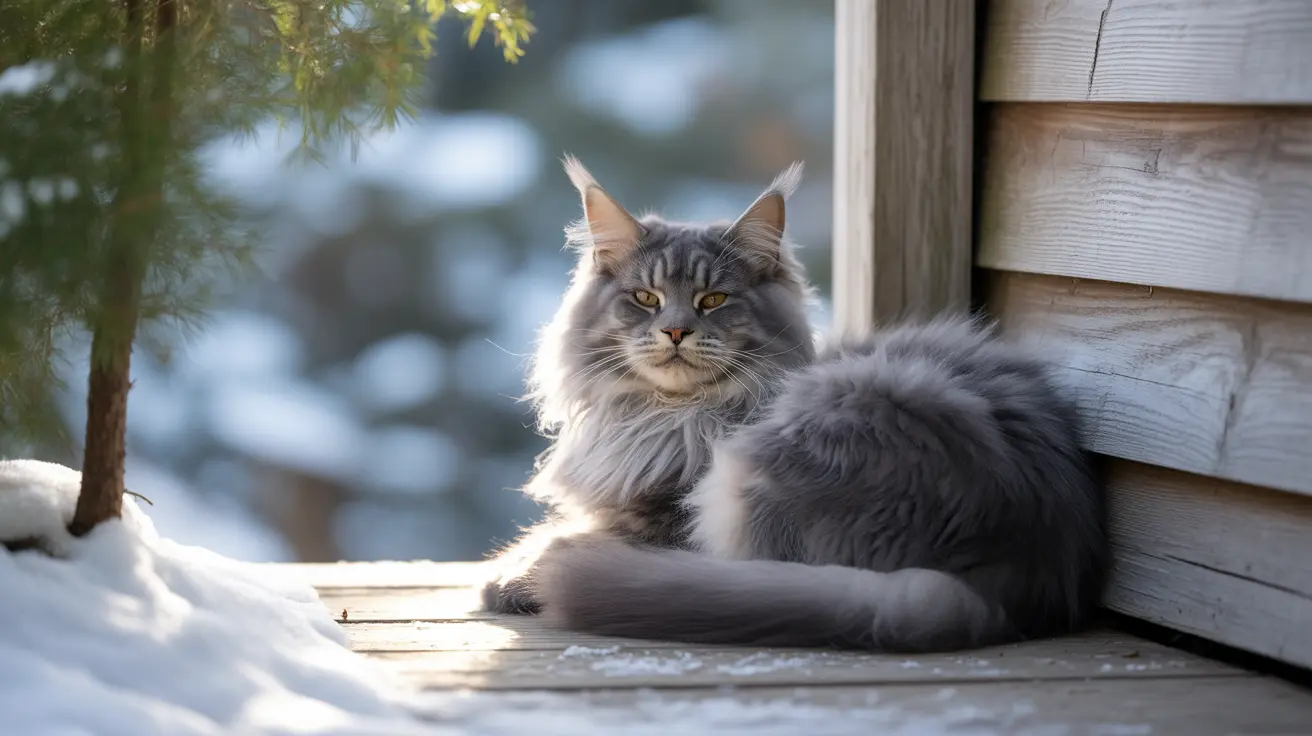When winter arrives, many animal lovers worry about stray cats facing harsh weather conditions. These resilient creatures have developed remarkable strategies to survive cold temperatures, though they still face significant challenges during winter months. Understanding how stray cats cope with cold weather can help us provide better support for these outdoor felines.
Natural Adaptations for Winter Survival
Stray cats develop several biological adaptations to help them survive cold weather. Their bodies naturally grow thicker winter coats that provide essential insulation against dropping temperatures. This seasonal coat change helps trap body heat and creates a protective barrier against wind and moisture.
Additionally, cats instinctively seek out protected spaces that offer natural insulation. They commonly find refuge under porches, in abandoned buildings, or within dense vegetation where they can escape harsh winds and preserve body heat.
Survival Strategies in Freezing Temperatures
During particularly cold spells, stray cats employ various behavioral tactics to stay warm. They often huddle together in groups, sharing body heat to maintain warmth. This social behavior significantly increases their chances of survival compared to solitary cats.
- Limiting physical activity during the coldest parts of the day
- Finding sunny spots for warming up during daylight hours
- Seeking makeshift shelters near human structures that retain heat
- Curling into tight balls to minimize heat loss through exposure
Critical Challenges During Winter
Despite their adaptations, stray cats face several serious challenges during winter months. Access to unfrozen water becomes increasingly difficult, and food sources become scarcer just when they need more calories to maintain body heat. The risk of frostbite and hypothermia is ever-present, particularly affecting ears, paws, and tails.
How Humans Can Help
Human intervention can significantly improve survival rates for stray cats during winter. Providing insulated shelters, regular food supplies, and fresh unfrozen water makes a crucial difference. DIY shelters can be created using simple materials like plastic storage containers lined with straw, which offers excellent insulation while staying dry.
Frequently Asked Questions
Do stray cats get cold in winter even with their thick fur coats?
Yes, stray cats do get cold despite their winter coats. While their fur provides some protection, it's not enough to fully shield them from extreme temperatures, especially during prolonged exposure to freezing conditions.
What are the best ways to provide shelter for stray cats during freezing weather?
The best shelters are small, insulated structures raised off the ground, with entrances protected from wind. Using materials like plastic bins filled with straw for bedding provides effective protection. Multiple small shelters are better than one large one to maintain warmth.
How can I keep water and food from freezing for outdoor cats in cold temperatures?
Use deep, plastic bowls instead of metal ones, place them in sunny spots, and check/replace water frequently. Heated water bowls can be used where electricity is available. Wet food should be served in insulated containers or during warmer parts of the day.
Why is straw recommended over blankets or hay for bedding in outdoor cat shelters?
Straw provides superior insulation while staying dry and allowing cats to burrow. Unlike blankets or hay, straw doesn't retain moisture, which could freeze and potentially cause hypothermia. It's also naturally resistant to mold and bacteria.
How does feeding more food help stray cats survive cold winter months?
Cats require additional calories during cold weather to maintain body temperature and energy levels. Extra food, especially high-calorie options, helps them build and maintain the fat reserves necessary for surviving cold temperatures.
Conclusion
While stray cats have developed impressive survival mechanisms for cold weather, they still benefit greatly from human assistance during winter months. By understanding their needs and providing appropriate support, we can help these resilient animals survive even the harshest winter conditions.






